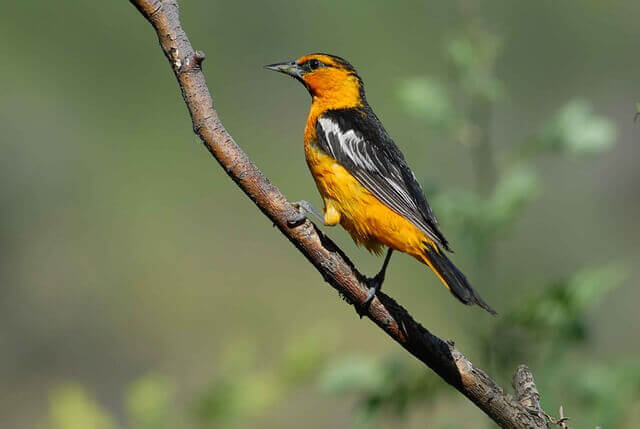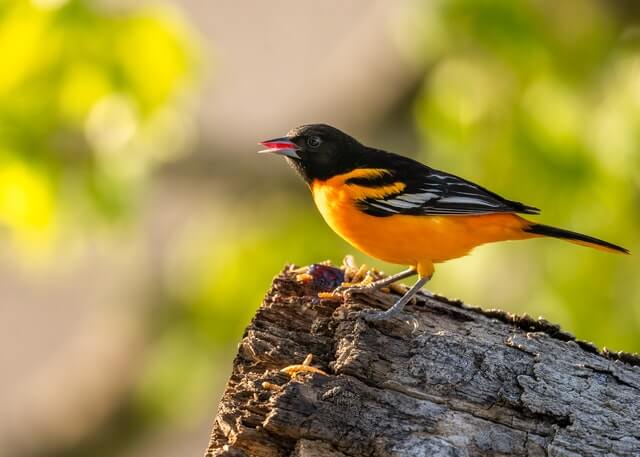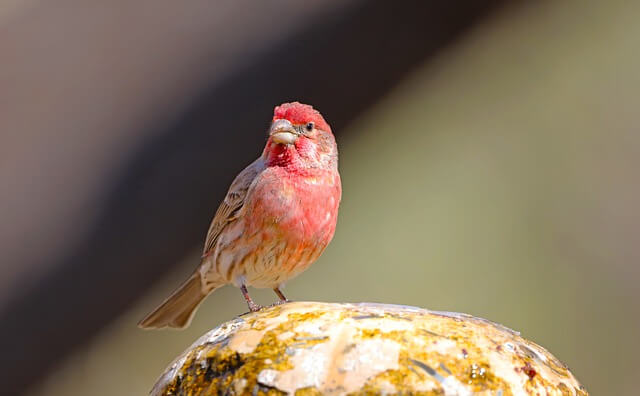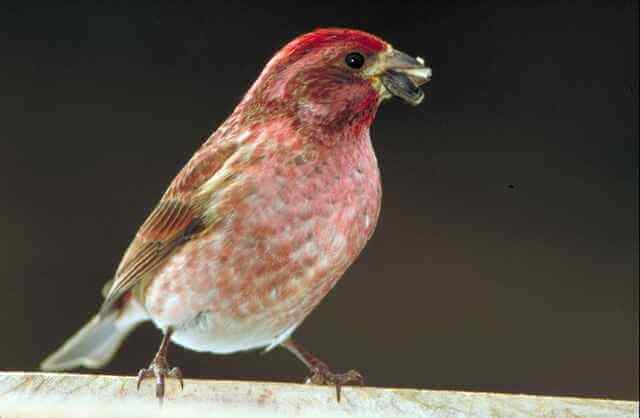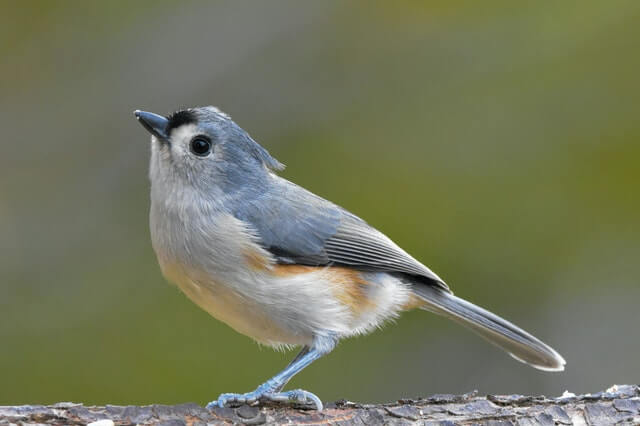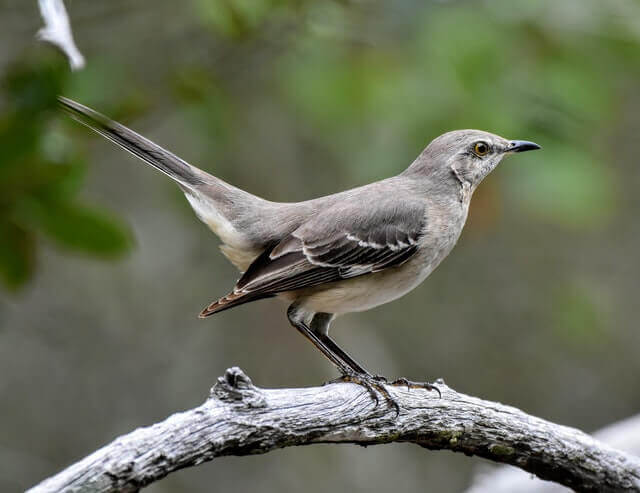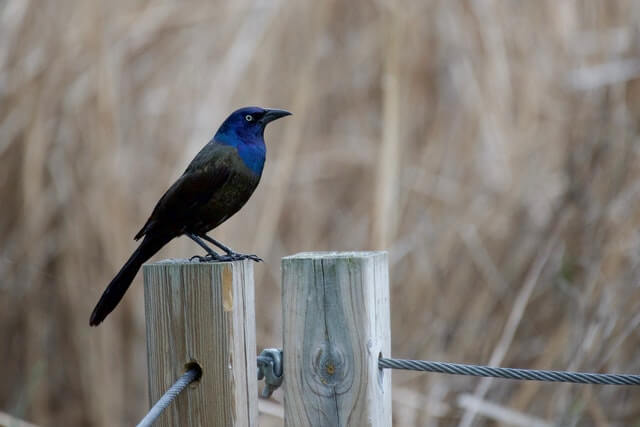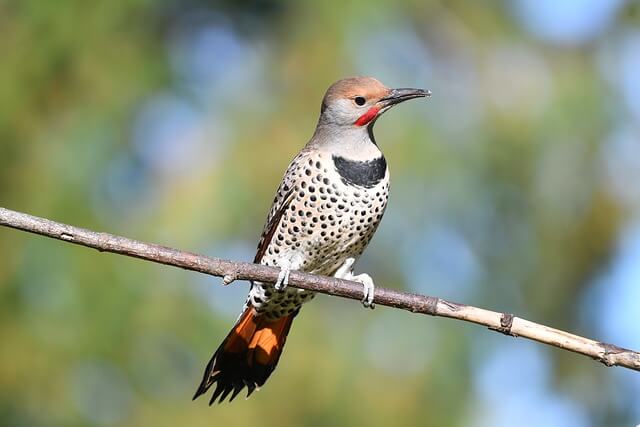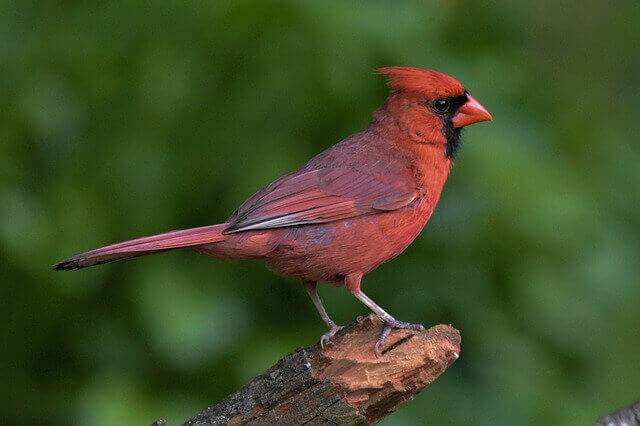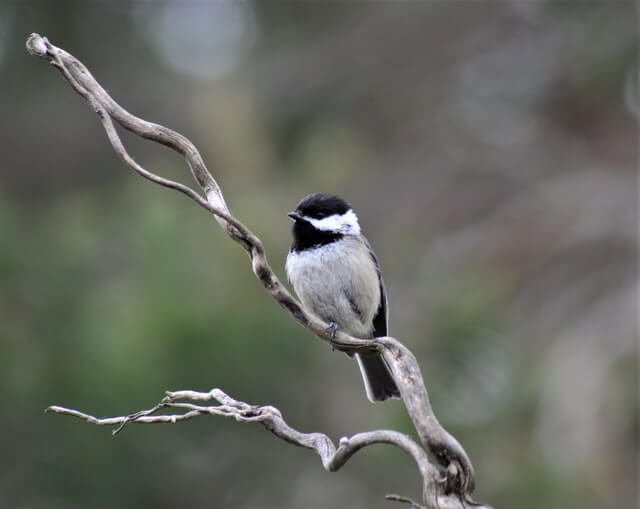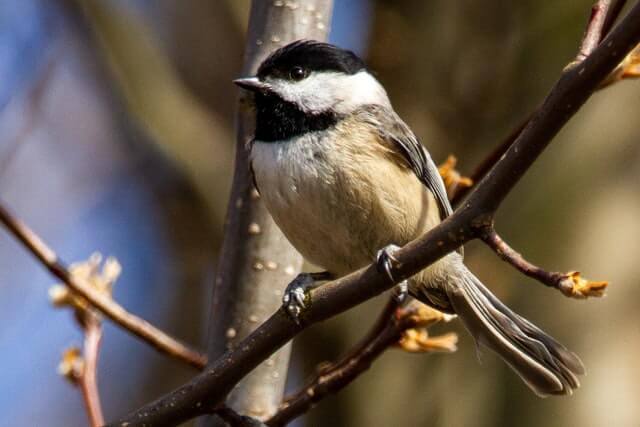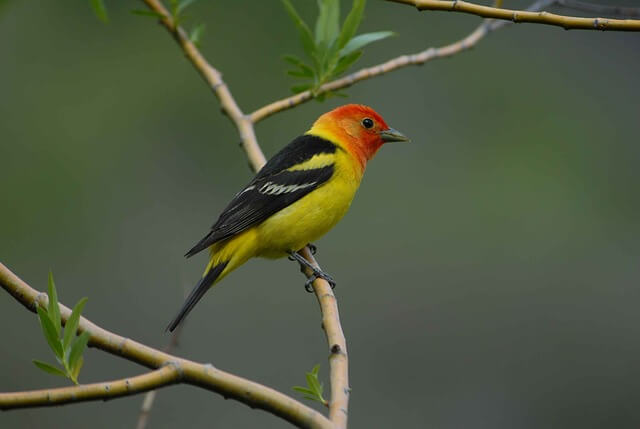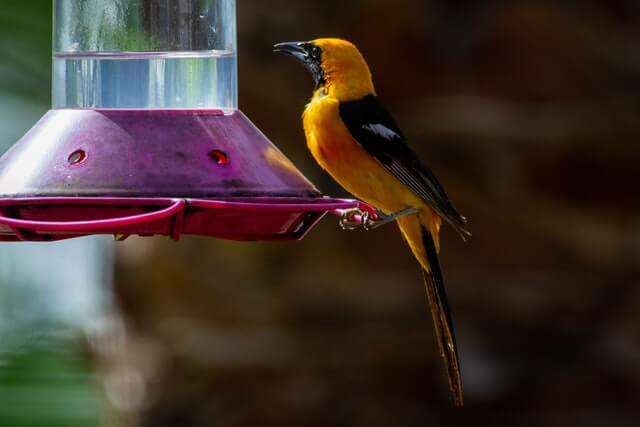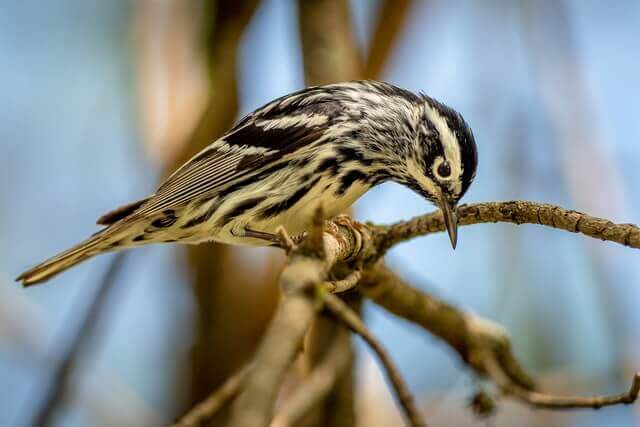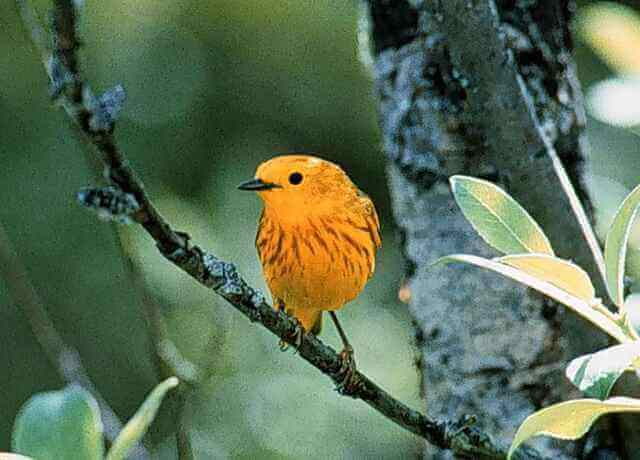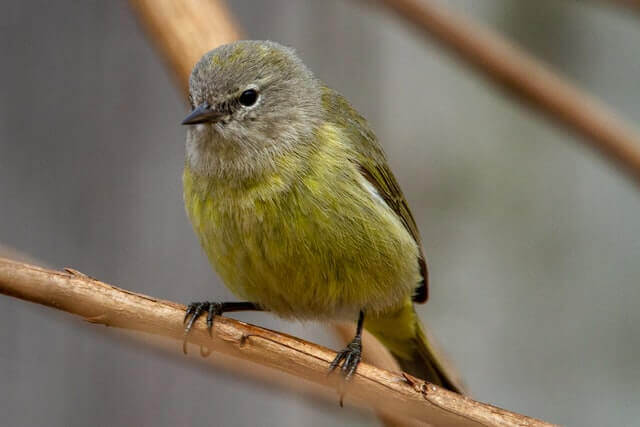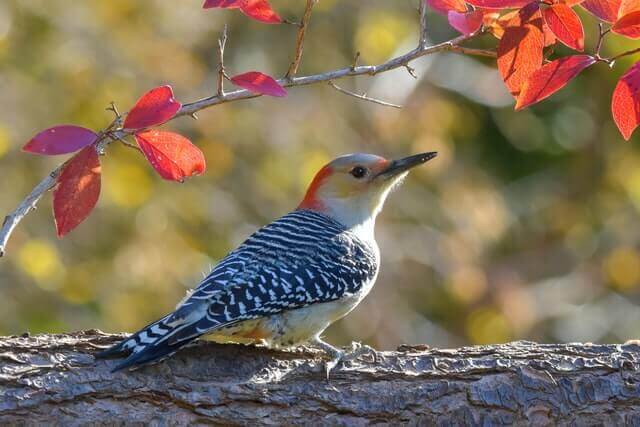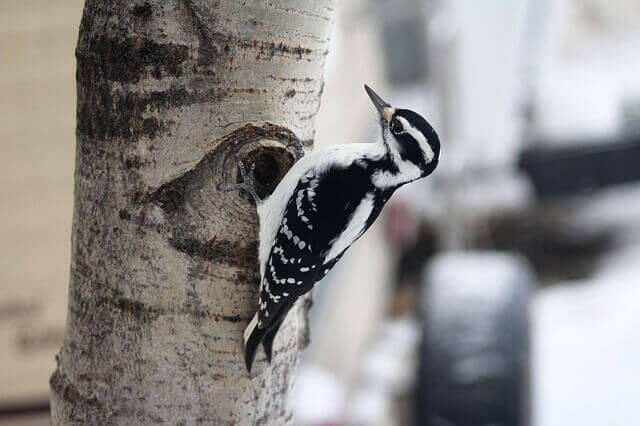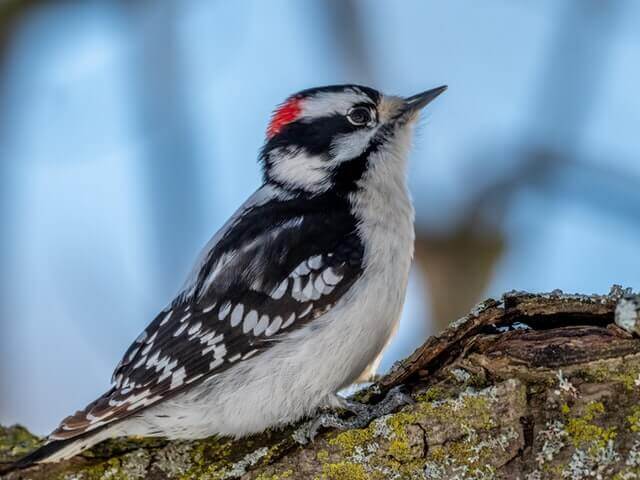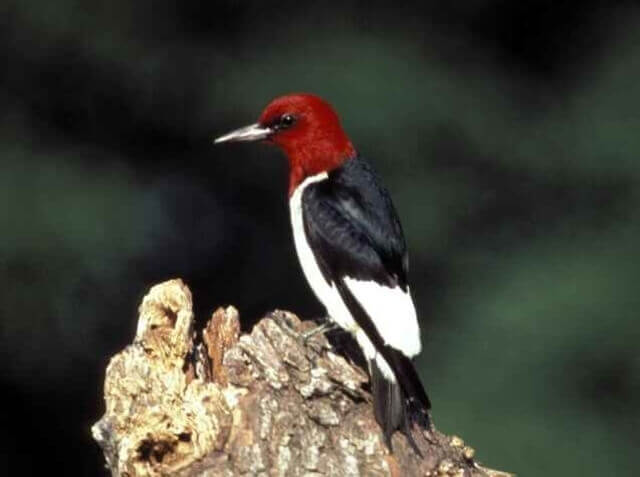If you’re a bird lover, there’s nothing more enjoyable than watching birds flit about your yard. If you have a hummingbird feeder, you may be wondering which birds visit it. Here’s a guide to 20 birds that commonly feed at hummingbird feeders, complete with awesome facts, photos and identification tips.
Table of Contents
- 1 Why do birds like nectar?
- 2 Birds that Feed at Hummingbird Feeders
- 2.1 Bullock’s Oriole
- 2.2 Baltimore Oriole
- 2.3 House Finch
- 2.4 Purple Finch
- 2.5 Tufted Titmouse
- 2.6 Northern Mockingbird
- 2.7 Common Grackle
- 2.8 Northern Flicker
- 2.9 Northern Cardinal
- 2.10 Black-capped Chickadee
- 2.11 Carolina Chickadee
- 2.12 Western Tanager
- 2.13 Hooded Oriole
- 2.14 Black-and-White Warbler
- 2.15 Yellow Warbler
- 2.16 Orange-crowned Warbler
- 2.17 Red-bellied Woodpecker
- 2.18 Hairy Woodpecker
- 2.19 Downy Woodpecker
- 2.20 Red-headed Woodpecker
- 3 Managing Uninvited Visitors
- 4 Sharing Your Nectar Feeder with Wildlife
- 5 Frequently Asked Questions
- 5.1 What is the yellow bird at my hummingbird feeder?
- 5.2 What birds scare hummingbirds away?
- 5.3 What was this orange and black bird on my hummingbird feeder?
- 5.4 Should I put my hummingbird feeder in the sun or shade?
- 5.5 What is eating my hummingbird food at night?
- 5.6 Do any birds prey on hummingbirds?
- 5.7 Do blue jays eat hummingbirds?
- 5.8 What time of day do hummingbirds eat the most?
- 5.9 Why is a woodpecker drinking from my hummingbird feeder?
- 5.10 Why won’t hummingbirds drink my nectar?
- 5.11 What is the natural enemy of a hummingbird?
- 5.12 Do scrub jays eat hummingbirds?
- 6 Author
Why do birds like nectar?
Birds are drawn to nectar due to its high energy content and easy consumption. Nectar, produced by flowering plants to attract pollinators, is a sweet liquid with simple sugars like glucose and sucrose. The birds’ efficient digestive system helps them extract the maximum energy from drinking nectar, providing them with a quick burst of energy.
Nectar is a readily available food source for birds with the right physical adaptations, like a long, slender beak. Its high energy content, accessibility, and sweetness make it a popular food source for many bird species. Nectar may also attract insectivorous birds that eat insects off the hb feeder.
Birds that Feed at Hummingbird Feeders
Bullock’s Oriole
The Bullock’s Orioles are medium-sized birds that come to feeders with their long beaks and eat up all the food. They can destroy a hummingbird’s meal in seconds! These birds are known for eating from other bird feeders, as well as taking peanuts out of dishes on porches. Bullock’s Orioles are native to Texas and New Mexico.
Related: 21 Backyard Birds that Eat Fruit
Baltimore Oriole
Baltimore Orioles are a common sight at many hummingbird feeders in the summer. They love to eat from these tiny bird feeders, and their big beaks make it easy for them to get all the nectar they need. They will often take over the feeder, but can be deterred by adding more feeders or by making them inaccessible.
Related:
House Finch
House finches are small, aggressive birds that can be found in North America. They like to feed on insects and nectar from flowers, but have also been known to enjoy sugar water or hummingbird feeders. Hummingbirds need a variety of food sources during the year, so it is not uncommon for them to visit a feeder when they come across one. House finches will eat anything as long as it has some kind of sugar content, and hummingbird feeders provide that.
Related:
Purple Finch
Purple finches are often seen around hummingbird feeders. They have a unique, but not entirely understood relationship with the nectar-filled bird feeders. Some say that purple finches will sometimes drink from the sugar water of hummingbird feeders to survive when other food sources are scarce in winter months, or even make a meal of the insects trapped in the feeder.
Tufted Titmouse
Tufted titmice are the most common bird at your hummingbird feeder. There is no doubt that these tiny songbirds love their sugar water, and they will go out of their way to get it! When there is a hard freeze or prolonged cold spell, tufted titmice will come in droves for some warmth and food. These birds are small but aggressive in nature and will fight other birds for food if they feel threatened.
Related: How to Attract Tufted Titmouse to your yard?
Northern Mockingbird
Hummingbird feeders attract a lot of attention, including from northern mockingbirds. These birds are quite common in the southern United States and live in proximity to hummingbird feeders. Northern mockingbirds may not be as attractive as the vibrant colors of many hummingbirds, but they do make for interesting bird watching opportunities.
Related:
Common Grackle
Common Grackles are large iridescent black, and purple-blue birds that are commonly seen at bird feeders. Feeding them is a popular pastime for people, but there is one thing you should know about grackles: they will steal food from other animals. Hummingbird feeders attract grackles because of the sweet nectar they produce. Grackles use their long beaks to drink this liquid, which can sometimes lead to injury or death if a hummingbird gets too close.
Northern Flicker
Hummingbird feeders attract Northern Flickers. Northern Flickers are common visitors to hummingbird feeders in the fall and winter months, especially during cold weather, when they need a high-energy source of food. These medium-sized woodpeckers typically stay near homes and yards where they can find plentiful sources of insects, seeds, berries, fruit and other goodies that make up their diet.
Related: How to Attract Northern Flickers to your yard?
Northern Cardinal
Hummingbird feeders are often thought of as a way to attract hummingbirds, but they also draw in cardinals. Many people enjoy the beauty and song of these small birds that make their homes near water sources like creeks or ponds. Cardinals will sometimes frequent yards with flower gardens or hedges for food and shelter, but it is common for them to perch on trees around hummingbird feeders looking for a quick meal.
Related:
- Where are Cardinal Birds Found – Best Places to Look
- Cardinal Bird Facts You Never Knew
- 10 Best Bird Feeders for Cardinals
Black-capped Chickadee
Hummingbird feeders are a great way to attract black-capped chickadees. The Black-capped Chickadee is one of the most common hummingbirds seen in North America, and they will flock to your yard if you have a hummingbird feeder. Chickadees eat insects and nectar, so it is a good idea to place some bug feeder stations near your hummingbird feeder.
Related:
Carolina Chickadee
Hummingbird feeders are a popular backyard bird feeder. However, these seemingly-sweet additions to the yard attract more than just hummingbirds and insects. Carolina Chickadees have been observed frequently visiting these feeding stations because they offer easy access to high-calorie food that is not available in their natural habitat. These birds eat almost constantly throughout the day and can easily gorge themselves on an excess of sugar water.
Related: Carolina Chickadees: 9 Best Ways to Attract them fast
Western Tanager
Hummingbird feeders attract Western Tanagers. Western Tanagers are colorful birds that spend the winter in Mexico and migrate to North America during the summer. They have a favorite food of nectar from flowers, which is why they like hummingbird feeders so much. The more attractive you make your hummingbird feeder, the more chances you have of attracting these beautiful little creatures!
Related: How to Attract Western Tanagers to your yard?
Hooded Oriole
Hummingbird feeders attract a variety of birds to your yard. One such bird is the Hooded Oriole, which can be found in the Americas and West Indies. Hooded Orioles will visit hummingbird feeders for nectar because they are attracted to the sugar water. They have also been observed feeding on insects at these same feeders so it’s not only about nectar for them!
Black-and-White Warbler
Hummingbird feeders attract Black-and-white Warblers. In recent years, many birdwatchers have noticed a black and white species of warbler at their hummingbird feeders. These birds are the Black-and-white Warbler, an uncommon visitor to southern Canada and eastern United States in summer months. These birds often frequent hummingbird feeders because they can eat insects and drink nectar from the feeder at the same time.
Yellow Warbler
Hummingbird feeders attract yellow warblers. Yellow Warblers are a species of bird that visit hummingbird feeders in the fall and winter months, which is when they migrate south to warmer climates. The birds eat at these feeders because it is a reliable source of food during their migration. These feeders provide insects for the yellow warbler.
Related: How to Attract Yellow Warblers to your Backyard Fast?
Orange-crowned Warbler
Orange-crowned Warblers are small songbirds that migrate from the south each year to breed in Northern states. These migratory birds like to visit hummingbird feeders for a quick snack of sugar water and insect protein, and they are often found hanging around these feeders with other bird species.
Red-bellied Woodpecker
Red-bellied Woodpeckers are attracted to hummingbird feeders for the sugar water, and insects that gets stuck on the feeder. They have been known to steal from hummingbirds, get aggressive with them, and even build their own nest near a feeder in order to keep an eye on it. Hummingbirds may be beautiful creatures of nature but they’re not alone at these bird feeders.
Related: How to Attract Red-bellied Woodpeckers to your Yard?
Hairy Woodpecker
Hairy Woodpeckers are usually not the first type of bird that come to mind when you think about feeders. Yet, they are among the most common visitors to hummingbird feeders. It is believed that these birds love hummingbird feeders because they have a natural desire for nectar and sugar water; their long tongues allow them to reach deep into the feeder where they find it.
Related: 12 Types of Birds That Peck Wood
Downy Woodpecker
The Downy Woodpecker is a type of bird that can be found all over North America. They are known for their habit of chiseling holes in trees to make nests, which is why they’re often seen around homes and parks looking for a good place to call home. Downy Woodpeckers love Hummingbird feeders because the sugar water attracts other insects and bugs, which the woodpeckers eat.
Related: How to Attract Downy Woodpeckers: Expert Tips!
Red-headed Woodpecker
Many people are not aware that red-headed woodpeckers can be attracted to hummingbird feeders. The key is in the sugar water used for hummingbird food. Red-headed woodpeckers love sugary foods and will often flock to your feeder if you put out a little extra sugar. The other secret is positioning the feeder near trees, where they have been known to perch.
Related:
Managing Uninvited Visitors
Attracting beautiful hummingbirds to your yard with a feeder can be a delight, but it’s crucial to weigh the possible downsides of uninvited guests as well. When feeders are tipped over, nectar spills can lead to wasted food and increased insect or wildlife activity.
Additionally, larger birds or animals may empty feeders more quickly than hummingbirds due to their bigger appetites. These visitors may also tamper nectar feeders, potentially damaging them. Uninvited guests may even intimidate hummingbirds away from feeding, disrupting their experience.
Furthermore, these guests could act as predators, waiting for prey in the vicinity of the feeder. Careful consideration is needed when deciding whether to install a hummingbird feeder.
Sharing Your Nectar Feeder with Wildlife
Accommodating other nectar-lovers at a hummingbird feeder can be tricky. The best way to ensure everyone gets their fair share is to provide multiple feeders in different areas of your garden. If you are using just one feeder, make sure it’s strategically placed away from trees and other perches that could block access.
Additionally, make sure the feeder is cleaned regularly to avoid any bacteria buildup and keep the nectar fresh. Another great tip is to use red plastic or glass instead of clear materials, as this helps encourage more birds to visit.
Lastly, hang wind chimes or other noise-makers nearby to deter larger birds like crows, who may scare away the smaller ones. With these easy tips, you’ll be able to share the nectar feeder with all the wildlife in your yard!
Frequently Asked Questions
What is the yellow bird at my hummingbird feeder?
If you have a yellow bird visiting your hummingbird feeder, it is likely a Yellow Warbler. The Yellow Warbler is a small songbird that is found throughout North and Central America. It is a common bird, and its bright yellow plumage makes it easy to identify. The Yellow Warbler eats insects, and so it is often found near ponds and streams where there are plenty of bugs to eat. If you want to attract more of these beautiful birds to your yard, put up a hummingbird feeder and fill it with sugar water.
What birds scare hummingbirds away?
There are a few different types of birds that have been known to scare away hummingbirds. One of the most common is the hawk. Hawks are predators and will sometimes go after smaller birds, like hummingbirds. Other birds that have been known to scare away hummingbirds include crows and jays. These larger birds can be aggressive and make a lot of noise, which can frighten smaller birds like hummingbirds
What was this orange and black bird on my hummingbird feeder?
It could be a Baltimore Oriole! The Baltimore Oriole is a small songbird that is native to North America. They are most commonly found in the eastern United States, but they can also be found in parts of Canada and Mexico. Baltimore Orioles are easily recognizable by their bright orange and black plumage.
Should I put my hummingbird feeder in the sun or shade?
If you live in a hot climate, it’s important to put your feeder in the shade so that the nectar doesn’t get too hot and start to ferment. However, if you live in a cooler climate, putting your feeder in the sun can actually help keep the nectar from freezing. Try to find a spot where the feeder will be protected from wind and weather while still getting plenty of natural sunlight.
What is eating my hummingbird food at night?
Hummingbird nectar is a sweet treat that can attract a variety of animals, such as honey badgers, skunks, martens, opossums, bears, squirrels, bats, and raccoons. To keep your supply safe, consider installing physical barriers or motion-sensor lights to deter these creatures. Offering alternative food sources can also help keep them away.
Do any birds prey on hummingbirds?
Yes, some birds do prey on hummingbirds! Numerous species may hunt these tiny birds, including hawks, falcons, shrikes, and even jays. These predators use their sharp eyesight to spot a hummingbird from far away and then swoop in for the attack. However, due to their small size and quick flying abilities, hummingbirds are usually able to evade them. This makes it difficult for predators to make a successful catch. It’s not uncommon for hummingbirds to escape almost unscathed!
Do blue jays eat hummingbirds?
Blue jays will consume hummingbird eggs and baby hummingbirds as part of their natural diet. They’re even known to behave aggressively towards adult hummingbirds in order to scavenge these resources. Although blue jays primarily feed on fruits, seeds and insects, they will take advantage of many different types of food sources when available.
What time of day do hummingbirds eat the most?
Studies suggest that it depends on a variety of factors, including where they live and the season. For instance, in warmer climates, hummingbirds often feed early in the morning before sunrise and late in the evening after sunset. In areas with more blooming flowers, hummingbirds need to harvest energy from many sources due to pollination needs during this time. And if there is abundant food available, these birds will also feed throughout the day.
Why is a woodpecker drinking from my hummingbird feeder?
It may feel like a shock when you see this large bird perched atop your delicate hummingbird feeder; however, there is no cause for alarm. The woodpecker isn’t attempting to outsmart or steal from the hummingbirds- he simply needs an energy boost! Woodpeckers love sugary treats and have been known to enjoy sipping nectar from hummingbird feeders.
Why won’t hummingbirds drink my nectar?
The first and most obvious reason is that the nectar has spoiled. Hummingbirds don’t have the luxury of refrigeration options and thus can only have access to fresh nectar. If yours has sat around too long or been exposed to extreme temperatures, it could easily become moldy, tainted and not be fit for consumption; thus, no birds around!
What is the natural enemy of a hummingbird?
The biggest natural enemy of a hummingbird is the hawk or other large birds of prey. These predators can easily snatch up a hummingbird in midair due to their size advantage. Additionally, backyard cats, snakes and rodents can also be a danger to smaller species of hummingbirds.
Do scrub jays eat hummingbirds?
Scrub jays are members of the Corvidae family and have a reputation for being opportunistic omnivores who will eat just about anything. This includes small bugs and lizards as well as plant matter, fruits and nuts. It’s no surprise then that scrub jays have been known to go after eggs and young ones of other birds, including hummingbirds.
Related Post: 31 Flowers That Attract Hummingbirds (Photos, ID & Info!)


